Bohemian-born artist František Kupka began in the 1890s by painting portraits and historical themes. Later he went on to become one of the key figures in the development of abstract expressionism and Orphic cubism (Orphism).
In this post we’ll see his works in chronological order in order to see the changes he made in his style through the years.
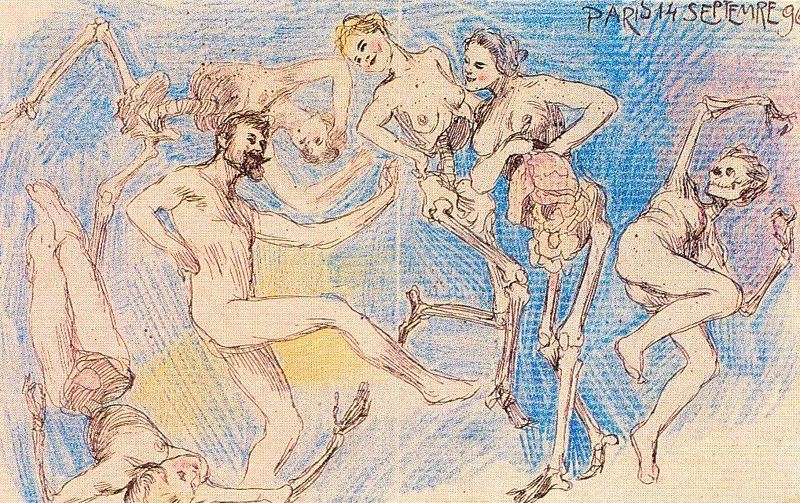
c. 1896, Danse Macabre
Kupka’s abstract works arose from a base of realism, but later evolved into pure abstract art.
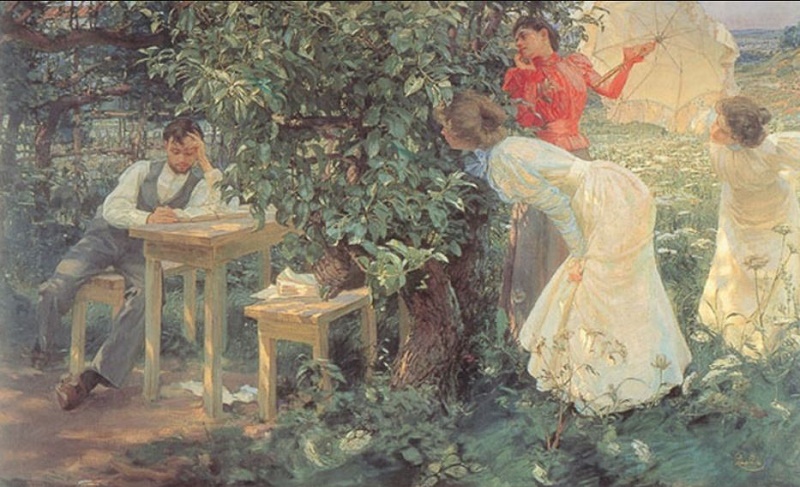
c. 1897, The Book Lover.
Kupka was born in Opočno (eastern Bohemia) in 1871. From 1889 to 1892, he studied at the Academy of Fine Arts in Prague. At this time, he painted primarily historical themes.
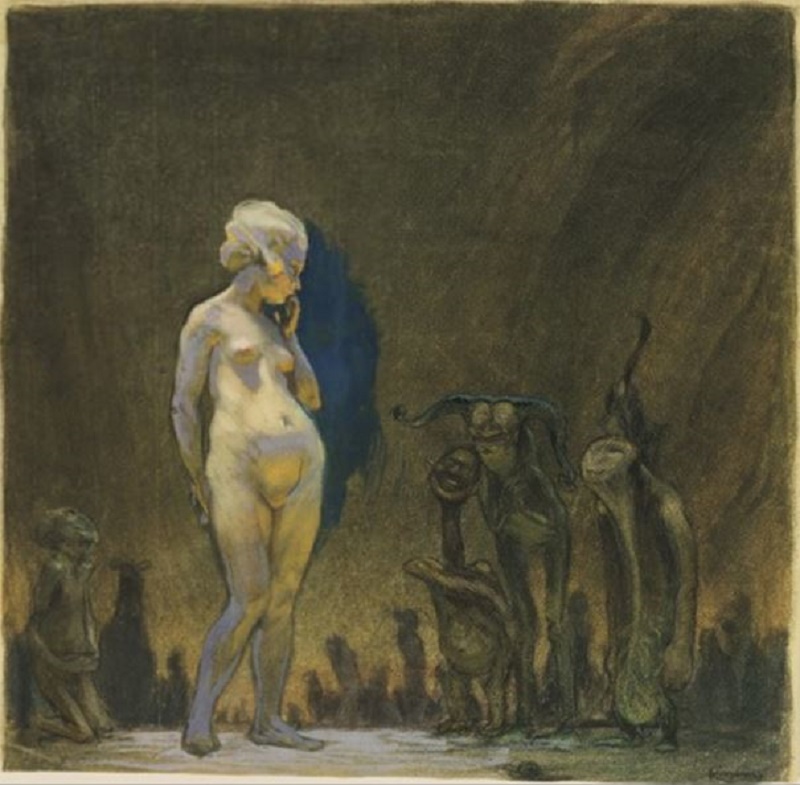
c. 1899, Admiration.
While associated with Czechoslovak art, Kupka was long based in France.
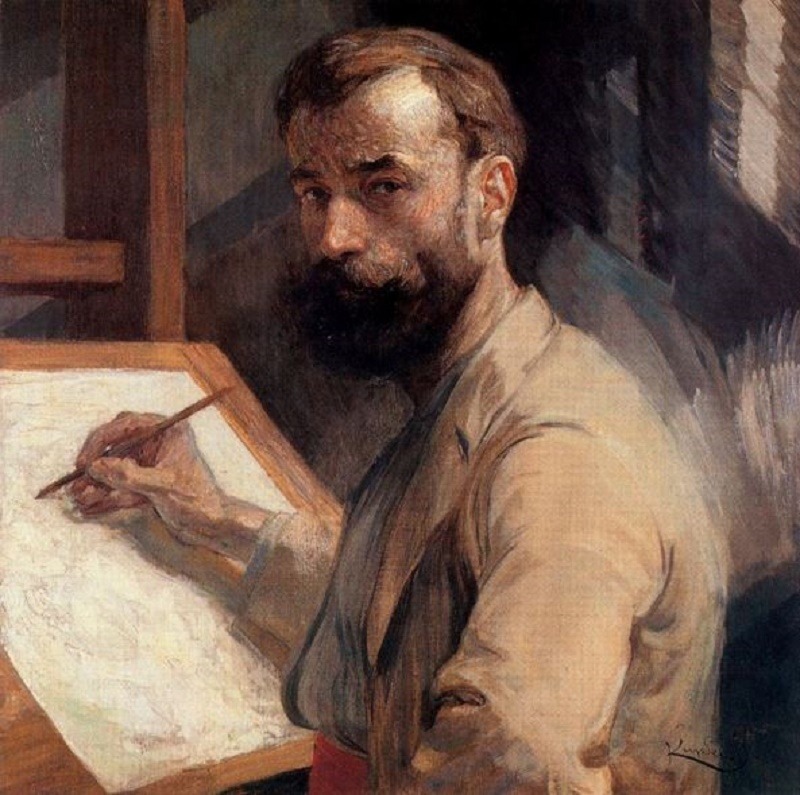
c. 1905, Self-Portrait.
Since 1906 he lived in Puteaux, a suburb of Paris where he worked as an illustrator of books and posters.
During his early years in Paris, became known for his satirical drawings for newspapers and magazines, including periodicals Le Canard Sauvage and L’Assiette au Beurre (which we cover in detail in an upcoming post).
Although he was living and working in Paris, Kupka’s Bohemian origins, mysticism, and eccentric personality kept him at a distance from the avant-garde circles of the artistic capital.
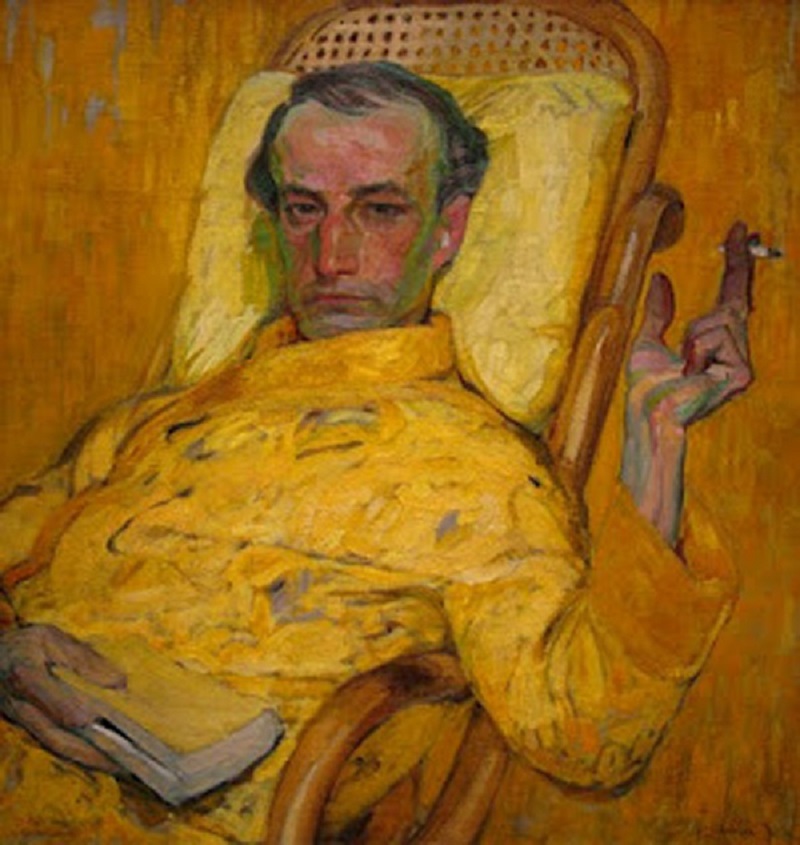
Frantisek Kupka: The Yellow Scale, c. 1907.
“The creative ability of an artist is manifested only if he succeeds in transforming the natural phenomena into ‘another reality.’ This part of the creative process as an independent element, if conscious and developed, hints at the possibility of creating a painting.”
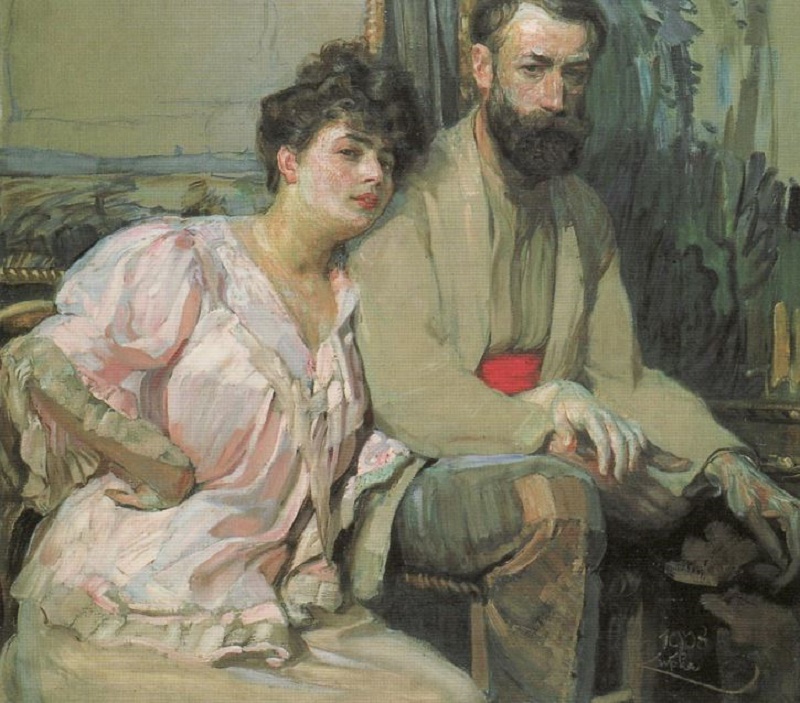
c. 1908, Self-Portrait with Wife.
He was most influenced by the first Futurist Manifesto, published in Le Figaro in 1909.
Kupka’s 1909 painting Piano Keyboard/Lake marked a break in his representational style.
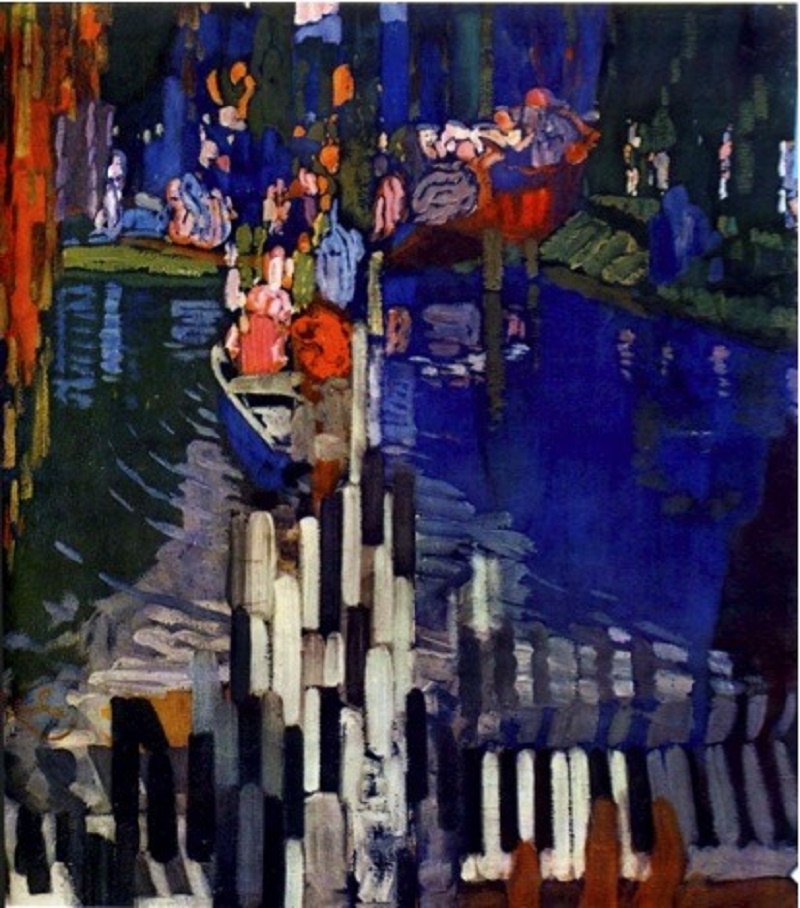
c. 1909, Piano Lake
His work became increasingly abstract around 1910–11, reflecting his theories of motion, color, and the relationship between music and painting (Orphism).
“I can find something between sight and hearing and I can produce a fugue in colors as Bach has done in music.”
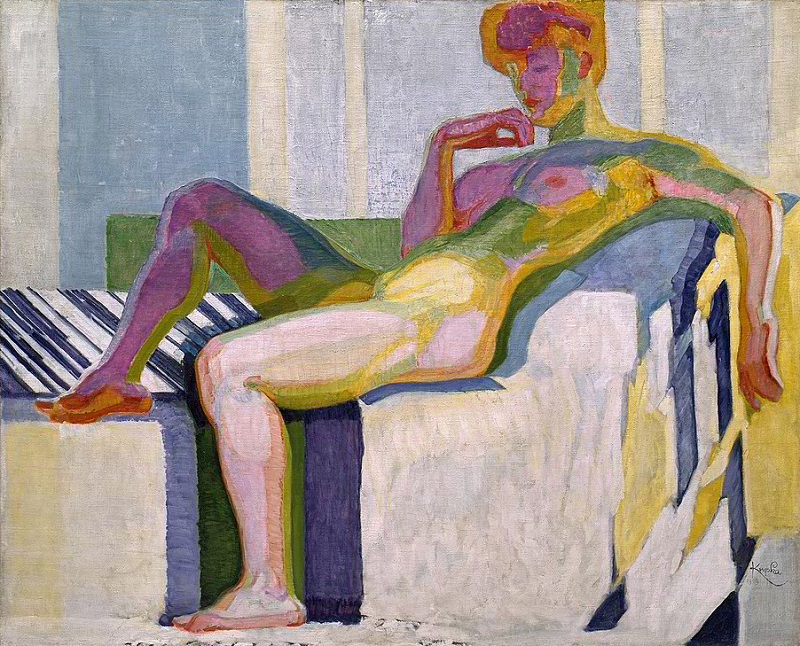
Kupka: Planes by Colors, Large Nude c. 1909-1910
Kupka’s paintings from the first two decades of the twentieth century most strongly demonstrate his interest in the cosmological and in the interplay between the visual arts and music.
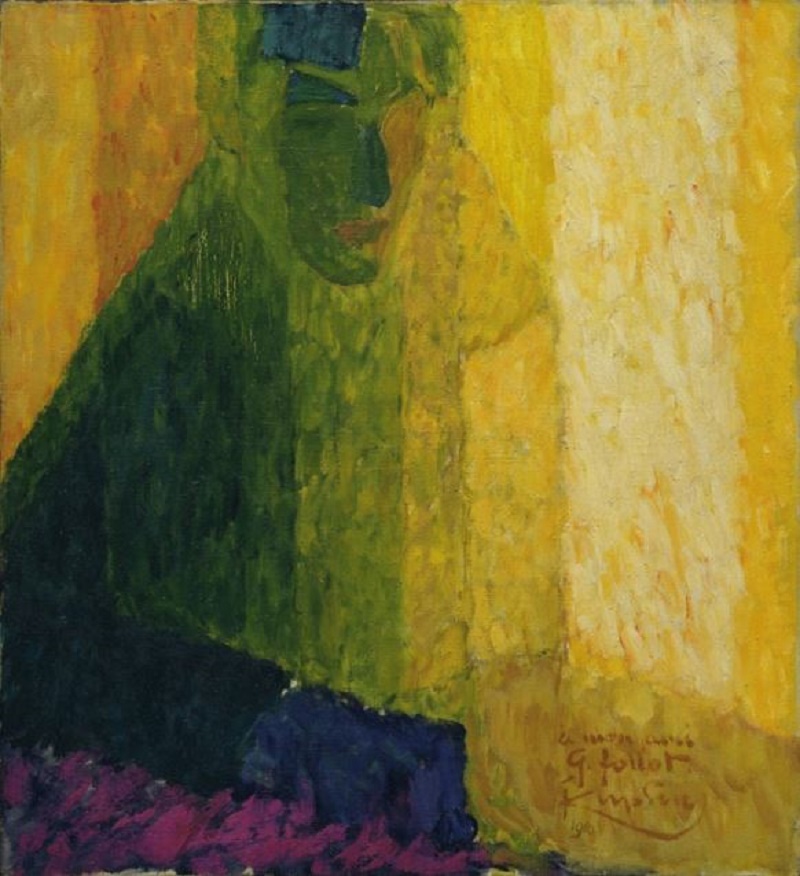
c. 1910, The Musician Follot.
“Once you realize that it is impossible to capture the character of the various manifestations of nature by pictorial means, and that an interpretation based on imagination is equally erroneous, you will not find yourself facing a gaping void as you might have feared.”
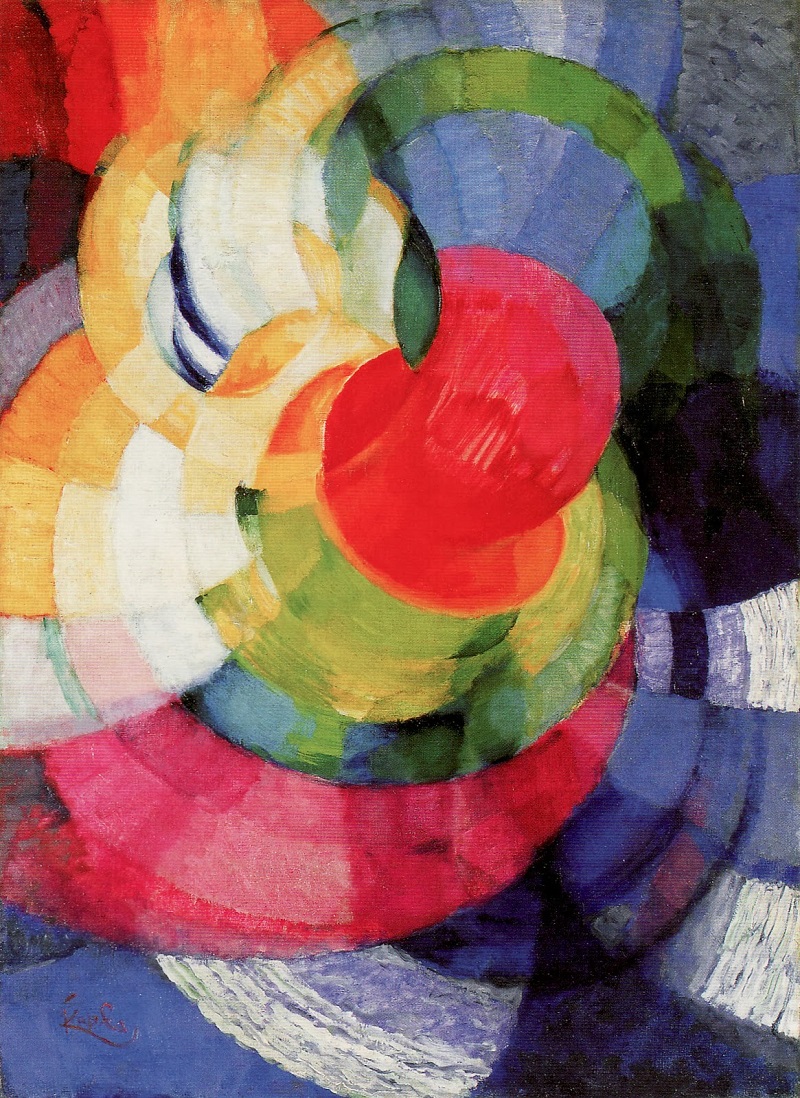
Kupka: Disks of Newton, Study for Fugue in Two Colors, c. 1911
Kupka would later say that to make the painting below, that he had “reworked an unfinished portrait of his wife, laying in strokes of color around her face until it was all but obscured by their boldly flat pattern”.
This method (and his words) suggest a literal assault on figuration.
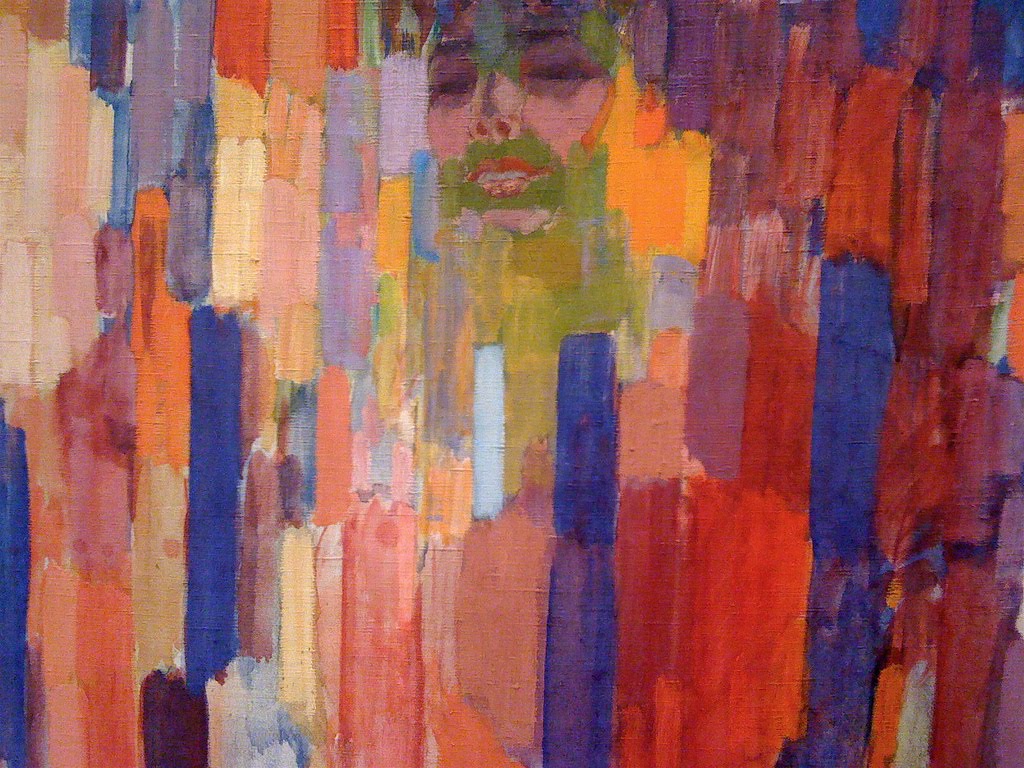
c. 1910-1911, Mme Kupka among Verticals.
In 1911, he attended meetings of the Puteaux Group (Section d’Or) and in 1912, he exhibited his Amorpha. Fugue à deux couleurs, at the Salon des Indépendants in the Cubist room, although he did not wish to be identified with any movement.
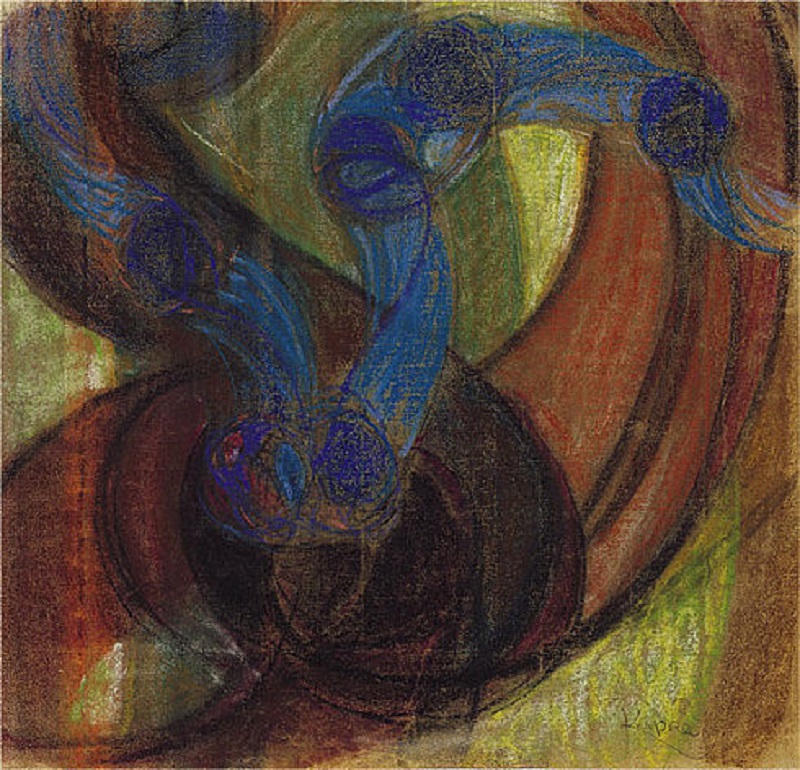
Kupka: Study for Amorpha, Warm Chromatic and for Fugue in two colors; Study for The Fugue c. 1910-1911
The pastel study reveals an early stage in the formal evolution of both of these paintings.
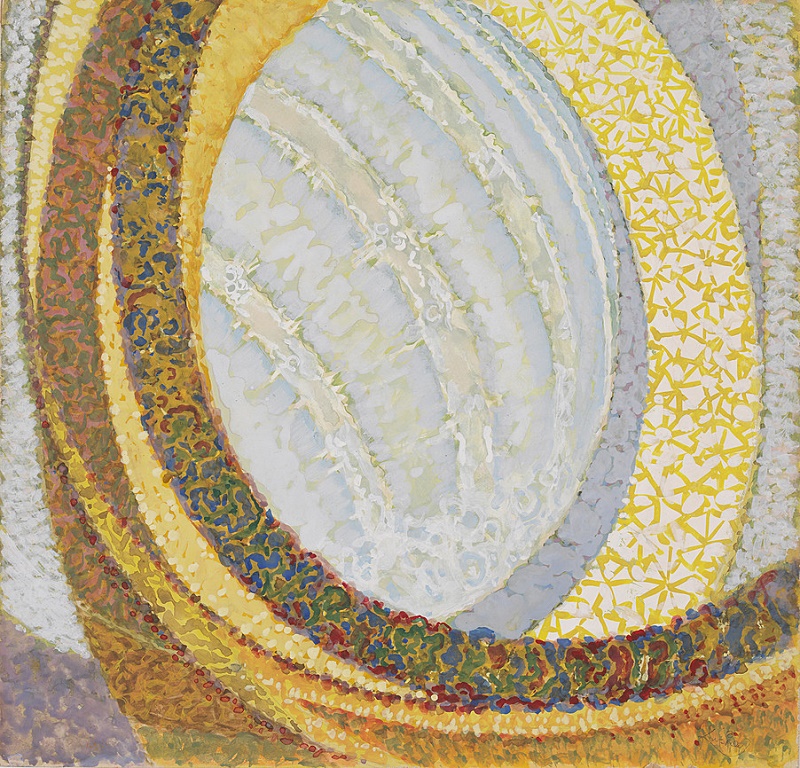
c. 1911-1912, Study for Cosmic Spring and Amorpha, Fugue in Two Colors.
In 1911 Kupka strove to eliminate objective subject matter from his paintings.
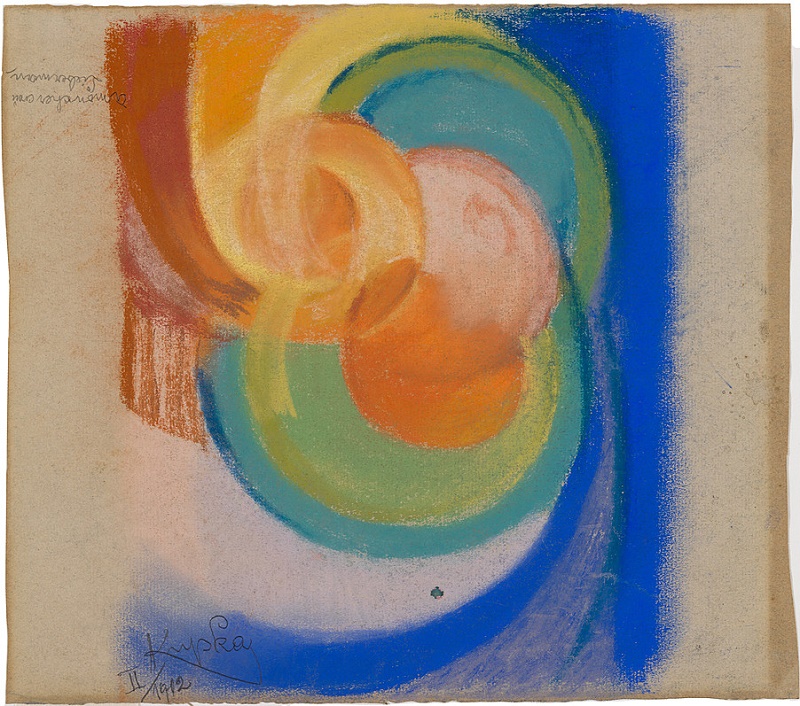
c. 1911-1912, Disks of Newton
His development toward abstraction is evident in his work of 1909 to 1911 in his interpretations of motion and of the light and color of Gothic stained-glass windows.
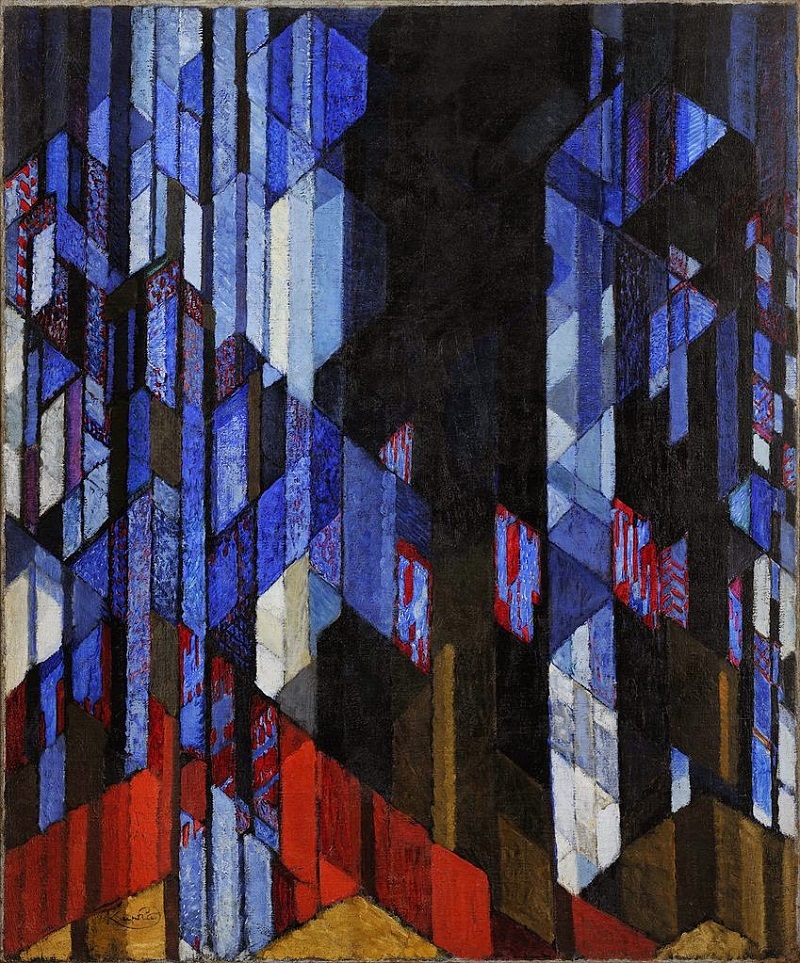
Kupka: The Cathedral (Katedrála) c. 1912–13.
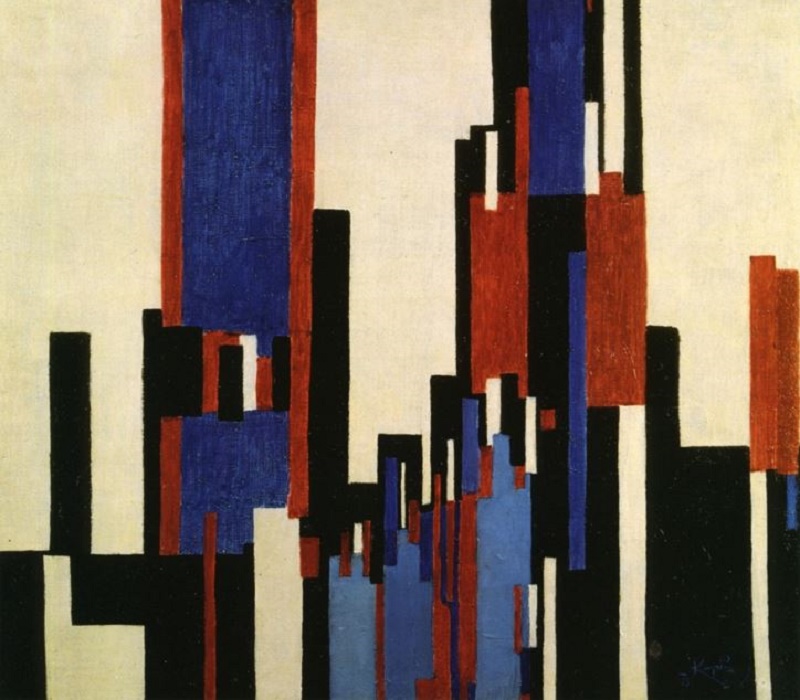
c. 1913, Vertical Plains Blue and Red.
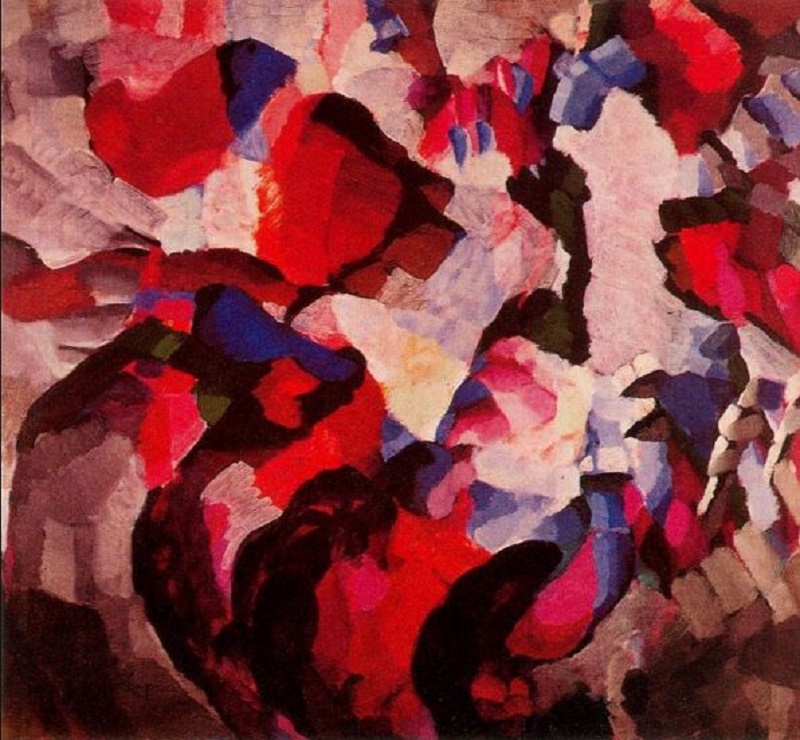
1920, Creation.
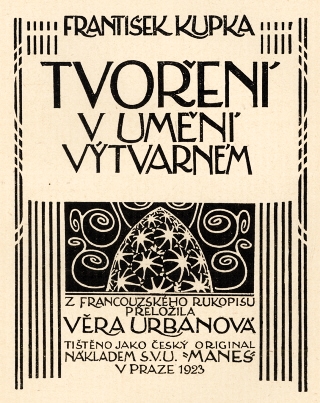
Creation in the Plastic Arts (Tvoření v umění výtvarném), is a 210 page book which Kupka completed in 1913.
It was published in Prague in 1923.
I sure would like to get my hands on that book! :)
Kupka had a strong interest in color theory and freeing colors from descriptive associations. His work is at times ethereal and spiritual. It reminds me of the written works of Rudolf Steiner and other Anthroposophic books.
In this work, entitled Hindu Motif, or Graduated Red it seems the people are lining up to go onto the next life…
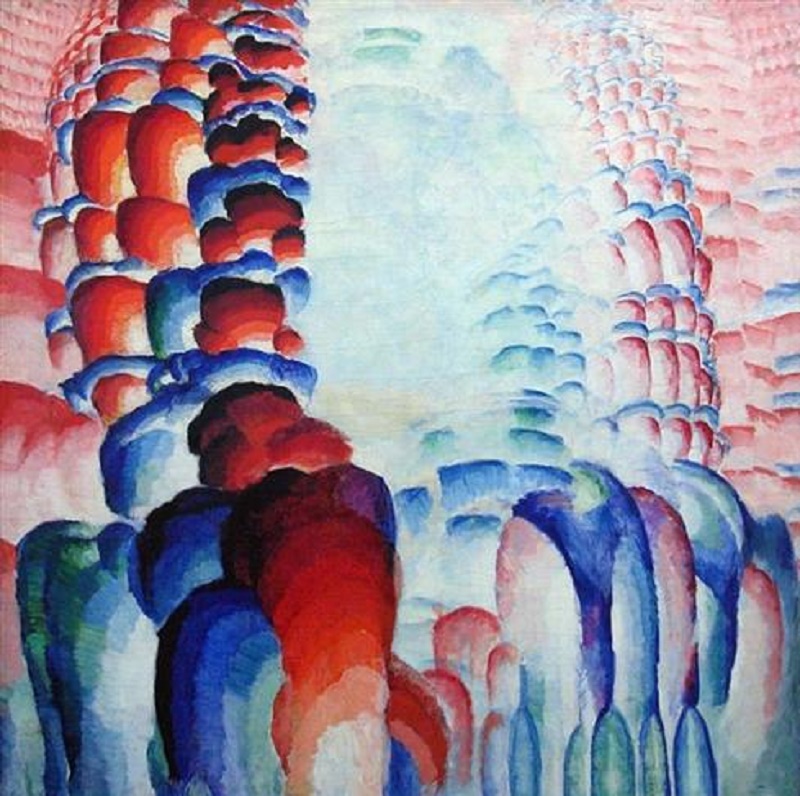
c. 1921, Hindu Motif, or Graduated Red.
In 1921, Kupka had his first solo show in Paris, and it was held at Galerie Povolozky.
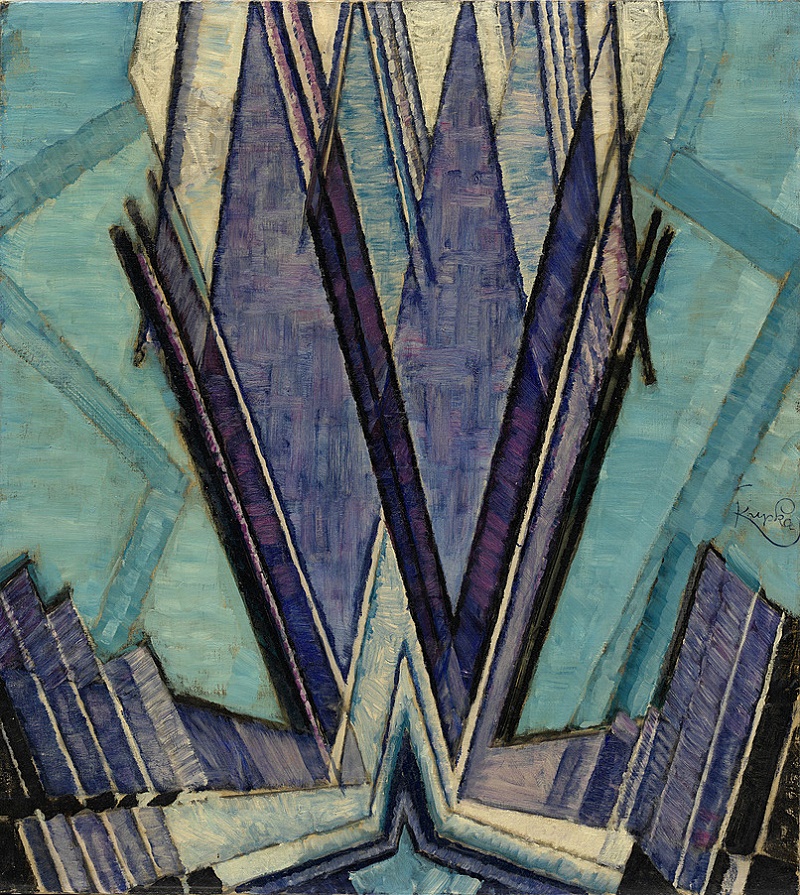
c. 1925, Form of Blue
In 1931, he was a founding member of Abstraction-Création together with Jean Arp, Albert Gleizes, Jean Hélion, Auguste Herbin, Theo van Doesburg, and Georges Vantongerloo.
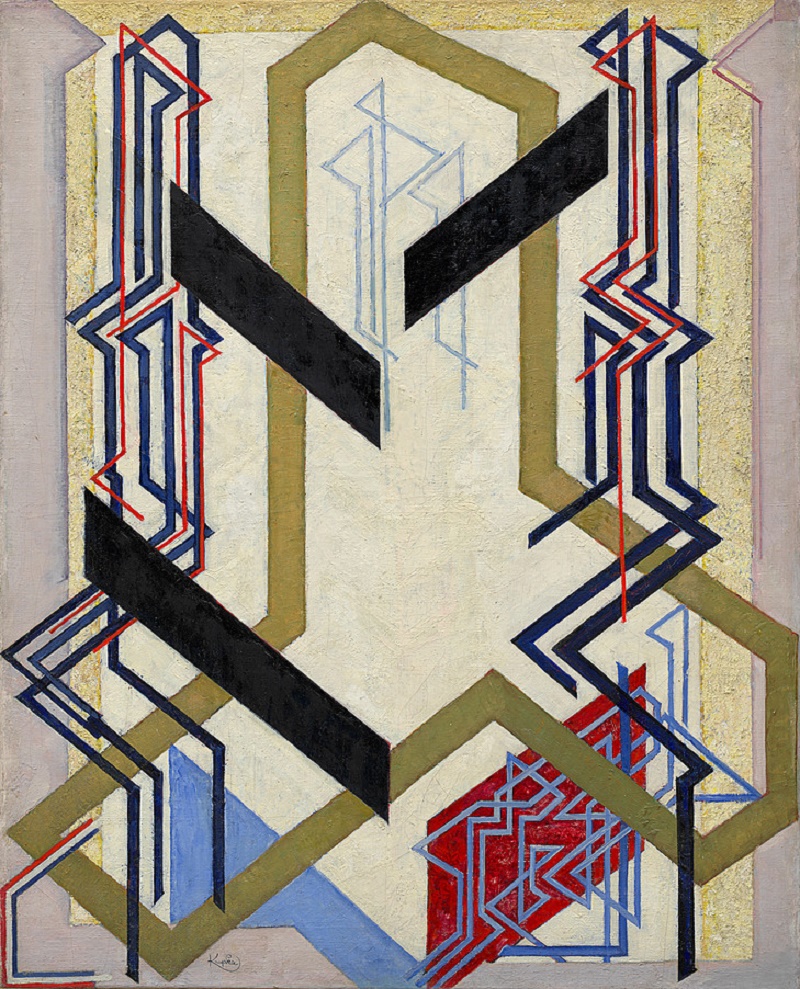
c. 1925, Arabesque II.
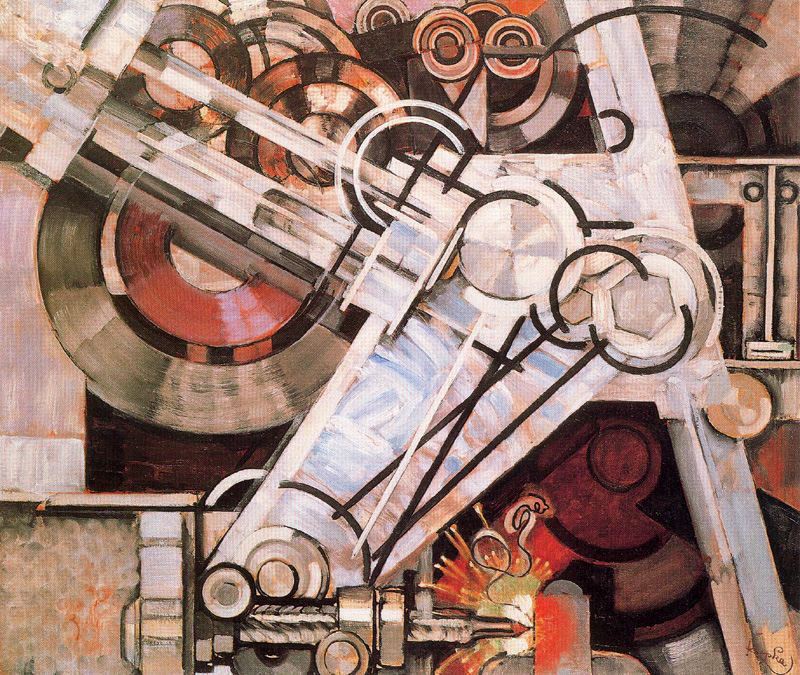
c. 1926, Drill.
In 1936, his work was included in the exhibition Cubism and Abstract Art at the Museum of Modern Art, New York, and in an important show with Alphonse Mucha at the Jeu de Paume, Paris.
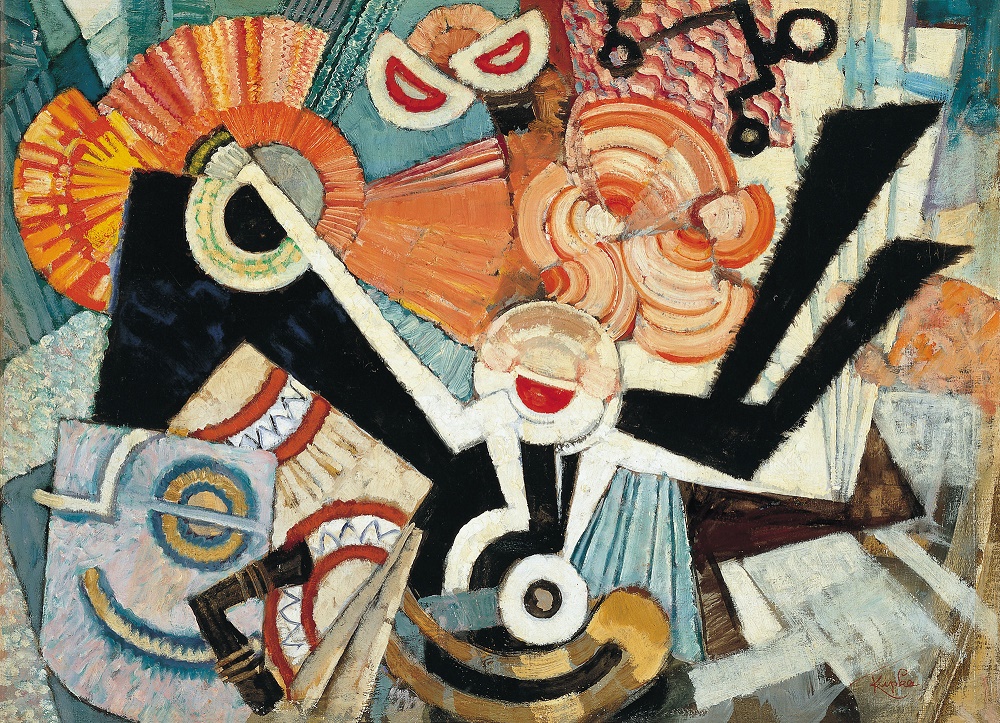
c. 1928, Staccato.
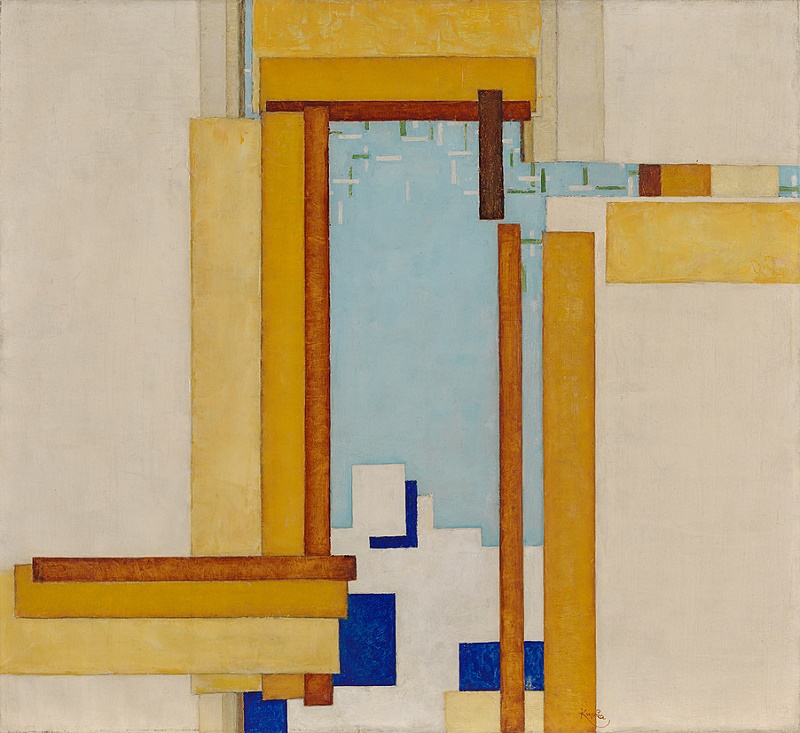
c. 1935–46, Contrasts Series (IV)
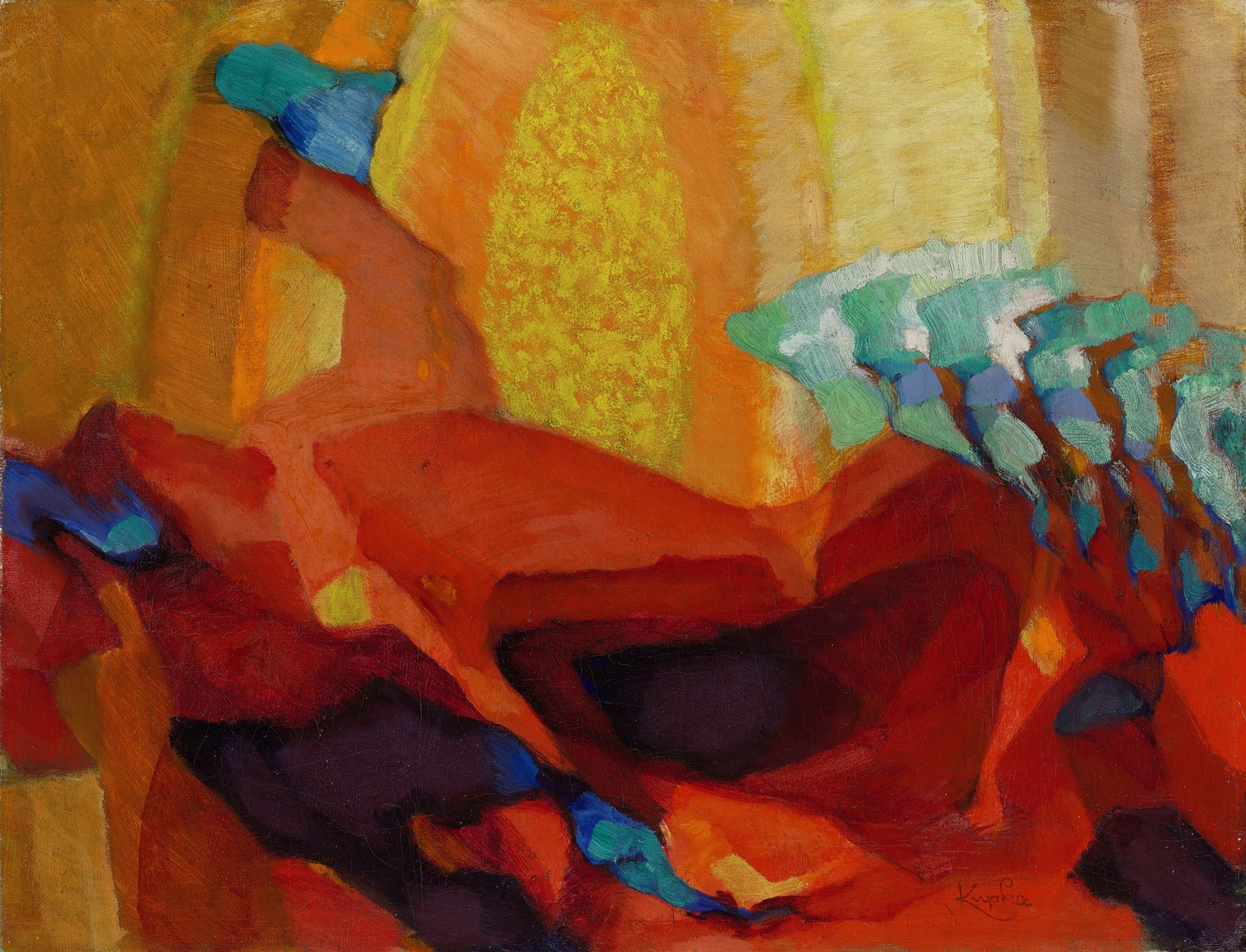
Movement, Recently sold at auction for £1,497,250.
A retrospective of his work took place at the Galerie S.V.U. Mánes in Prague in 1946.
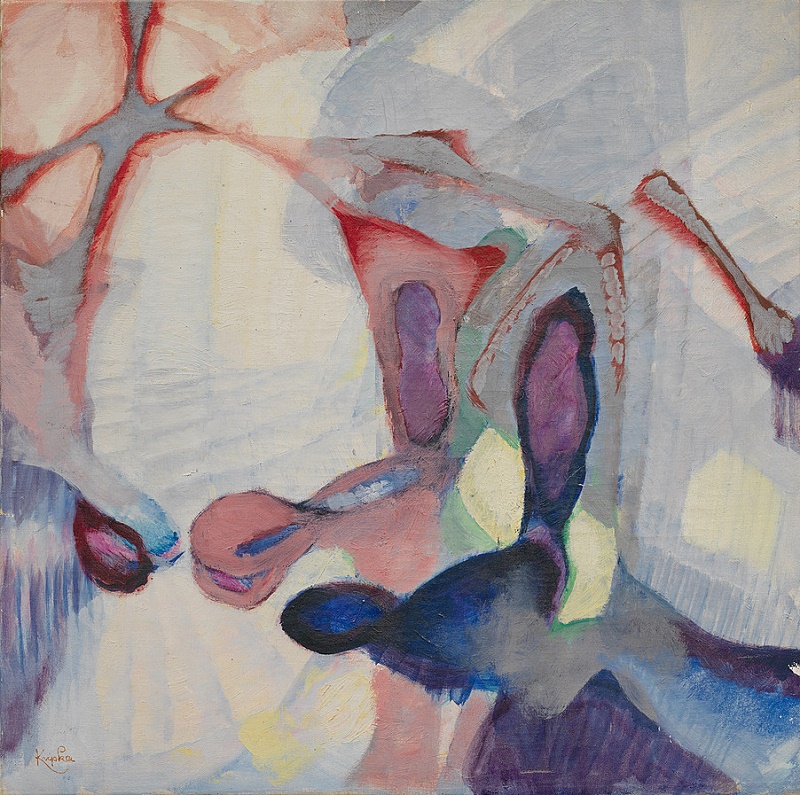
c. 1945, One Vision.
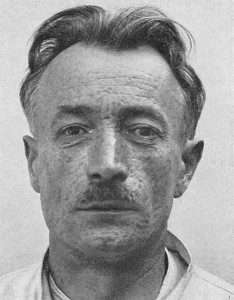 The same year, Kupka participated in the Salon des Réalités Nouvelles, Paris, where he continued to exhibit regularly until his death.
The same year, Kupka participated in the Salon des Réalités Nouvelles, Paris, where he continued to exhibit regularly until his death.
During the early 1950s, he gained general recognition and had several solo shows in New York.
Although Kupka resisted being associated with any artistic school or trend, his work crossed several artistic styles over his lifetime, from Symbolism to Orphism.
The catalogue (link below) features a broad selection of his work—from his early paintings and commercial illustrations to his later abstract work—accompanied by provenance, exhibition histories, and entries. It also includes extensive essays by curators Margit Rowell and Meda Mladek, both color and black-and-white reproductions, and a detailed chronology of Kupka’s life. You can read an entire and very detailed perspective catalogue and see much of his work here.
An interesting side-note on his life, Kupka served as a volunteer in the First World War, and is mentioned in “La Main Coupée” by Blaise Cendrars. Cendrars describes him as a “proud soldier, calm, placid, strong”… but really too old to be a soldier, being at least 25 years older than the rest.
When the regiment set out from Paris for the front in Picardy (they marched all the way on foot) Mme Kupka met the column as they arrived at the La Défense roundabout, near where they lived. She marched with them, carrying her husband’s bag and his rifle. She would have marched all the way to the front, but at the end of the first day the colonel had her arrested and sent back to Paris. She later made her way to the front lines to spend time with her husband.
Kupka himself left the front due to frostbite in the foot, caused by nights in the trenches waist-deep in freezing water. František Kupka died in Puteaux on June 24, 1957.
Sources: WikiArt, Prague Post, Gugenheim, TNNova, Mutual Art.
Thank you in advance for your support…
We know that you could spend hours, days, weeks and months finding some of this information yourselves – but at this website, we curate the best of what we find for you and place it easily and conveniently into one place. Please take a moment today to recognize our efforts and make a donation towards the operational costs of this site – your support keeps the site alive and keeps us searching for the best of our heritage to bring to you.
Remember, we rely solely on your donations to keep the project going.
We appreciate you more than you know!
If you have not already subscribed to get TresBohemes.com delivered to your inbox, please use the form below now so you never miss another post.




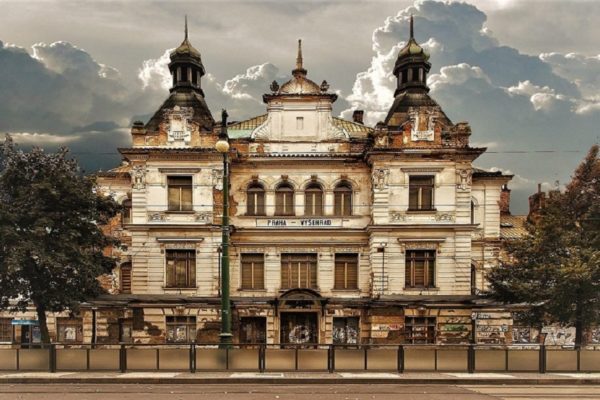
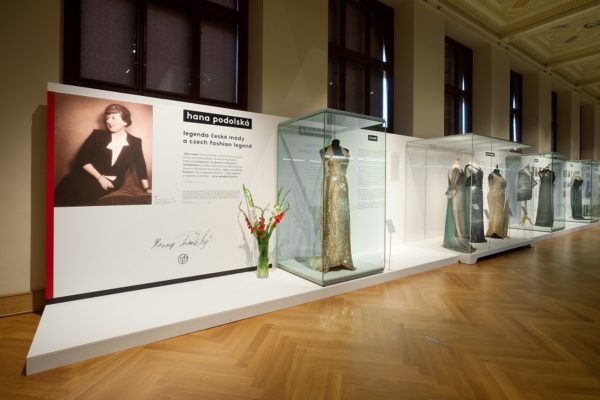
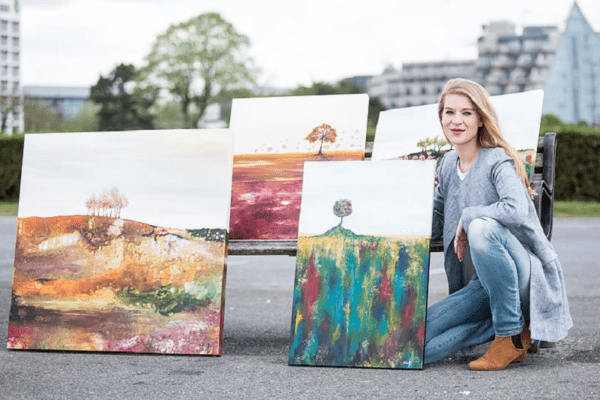















Interesting art.
Have you ever thought about writing an ebook or guest authoring on other sites? You do such a great job.